Ventricular Fibrillation (V-Fib) is a critical heart condition disrupting rhythm Recognizing its causes symptoms and treatments can save lives and health.
What are the main causes of ventricular fibrillation (V-Fib)?
- Coronary artery disease restricts blood flow to the heart muscle, creating electrical instability that can trigger ventricular fibrillation episodes.
- A previous heart attack leaves scar tissue that disrupts electrical pathways, significantly raising the risk of life-threatening V-Fib.
- Cardiomyopathy or structural abnormalities weaken heart function, making abnormal electrical signals more likely to occur.
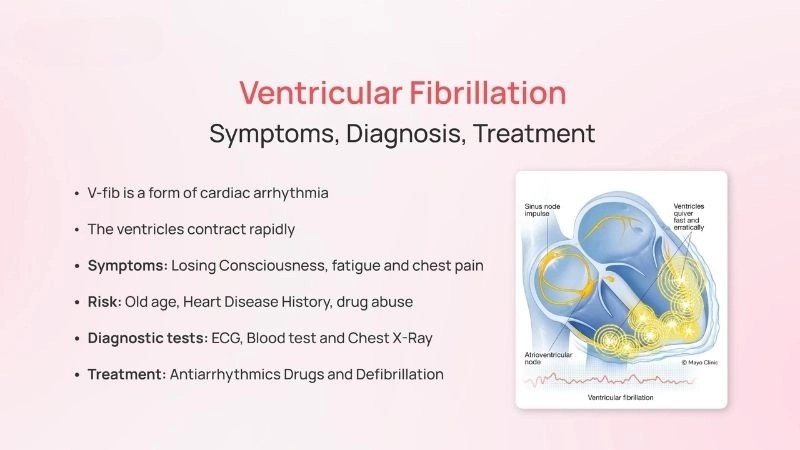
Defibrillation restores normal heart rhythm during emergencies
>>> Understand more about: Ventricular Tachycardia (V-Tach) prevention and therapy
Key symptoms of ventricular fibrillation (V-Fib) to watch for
- Sudden collapse is the most critical sign, as the heart cannot pump blood effectively during ventricular fibrillation.
- Loss of consciousness occurs within seconds due to inadequate blood flow to the brain.
- No pulse or breathing is detectable, requiring immediate emergency medical intervention and defibrillation.
How can you prevent ventricular fibrillation (V-Fib) effectively?
- Managing high blood pressure, diabetes, and cholesterol reduces overall heart strain and risk of electrical instability.
- Avoiding smoking, excess alcohol, and stimulant drugs lowers triggers for dangerous arrhythmias.
- Using prescribed medications or implantable devices like ICDs helps stabilize heart rhythm and prevent sudden cardiac arrest.
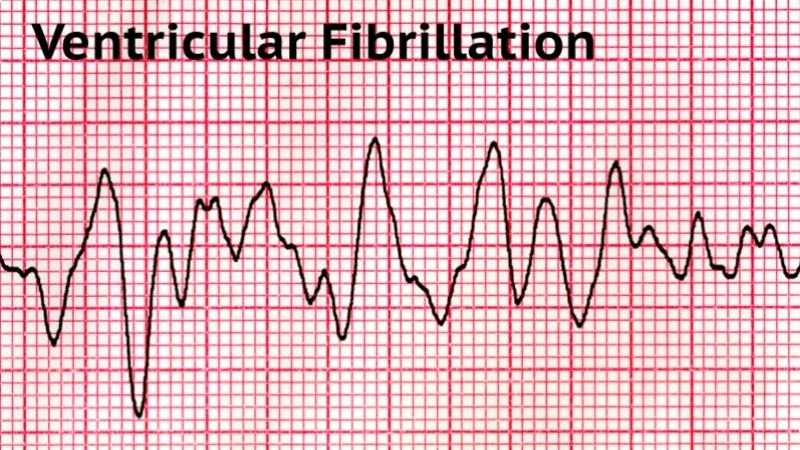
Cardiac arrest is a sudden stop of effective heart function
>>> Understand more about: Common paroxysmal supraventricular tachycardia symptoms
Images visual examples of ventricular fibrillation (V-Fib)
Ventricular fibrillation is a severe arrhythmia where the heart’s lower chambers quiver instead of pumping effectively. This disrupts blood flow, leading to sudden collapse and requiring immediate defibrillation.

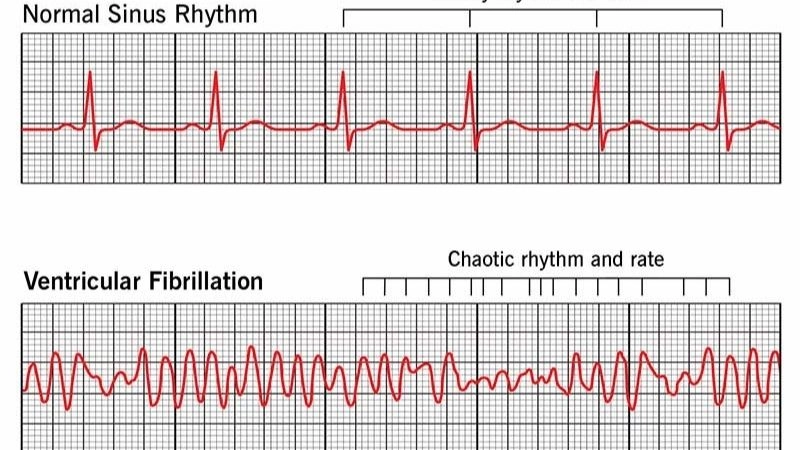
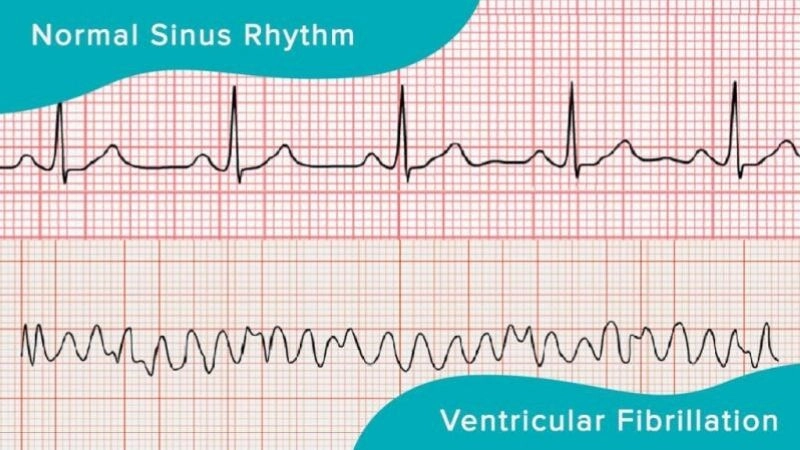
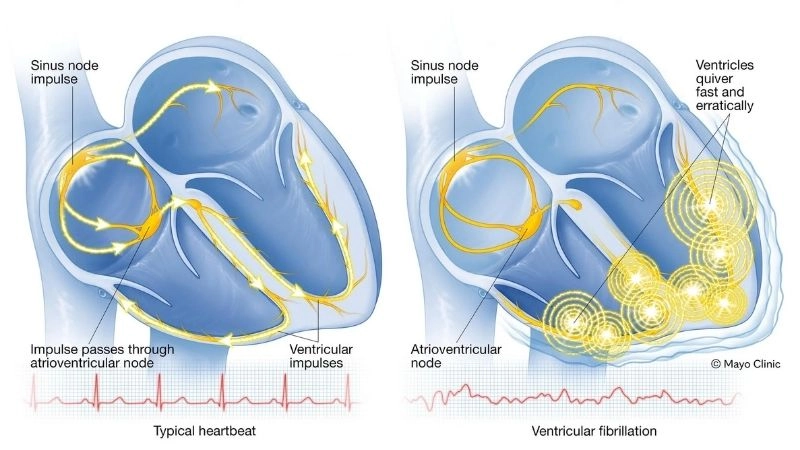
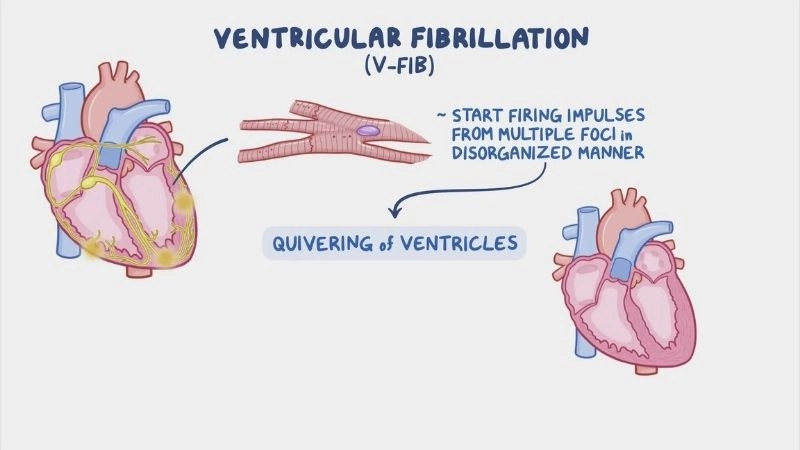
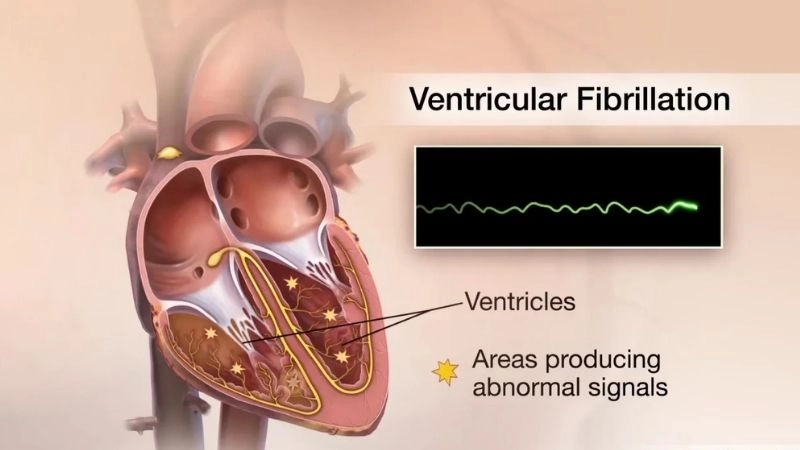
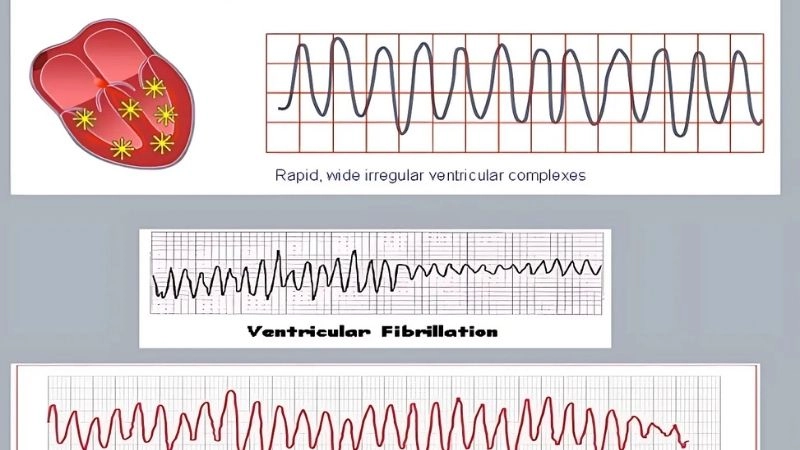
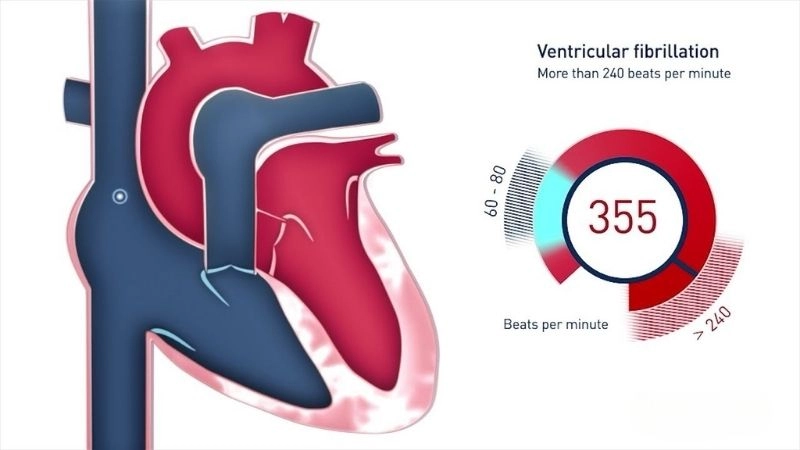
>>> Understand more about: Managing Supraventricular Tachycardia (SVT) effectively
Understanding Ventricular Fibrillation (V-Fib) aids early detection and effective treatment Protecting heart health starts with awareness and fast action.





